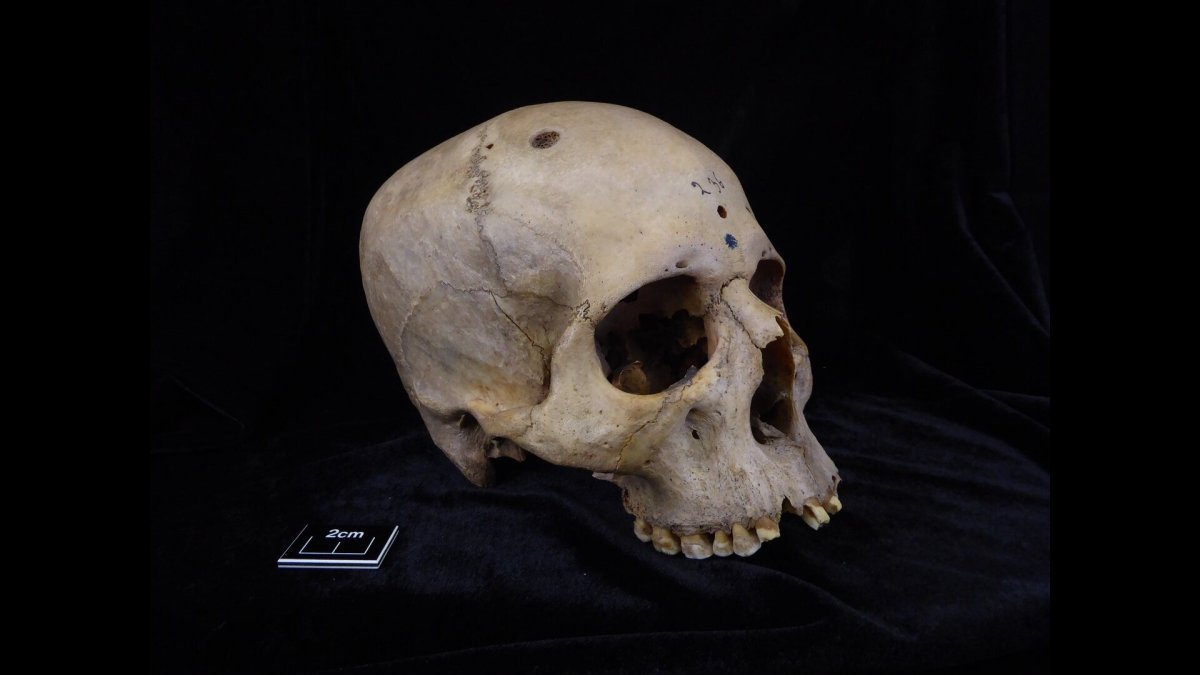The ancient Egyptians may have used surgery to attempt to treat cancer, a pair of 4,000 year old skulls suggest.
We know from ancient texts and physical evidence that the ancient Egyptians were exceptionally skilled at medicine for their time. But while they may have succeeded at dental fillings and proto-pregnancy tests, treating cancer was more of a challenge. But that doesn’t mean they didn’t try.
In a new study, published in the journal Frontiers in Medicine, researchers from the Universities of Tübingen in Germany, Cambridge in England, Barcelona and Santiago de Compostela in Spain appear to have found evidence of brain tumor extraction in patients 4,000 year ago.

Tondini, Isidro, Camarós, 2024.
“We wanted to learn about the role of cancer in the past, how prevalent this disease was in antiquity, and how ancient societies interacted with this pathology,” Tatiana Tondini, a researcher at the University of Tübingen and first author on the paper, said in a statement.
To do so, the researchers examined two skulls from the University of Cambridge‘s Duckworth Collection. The first, dating from between 2687 and 2345 BCE, belonged to a 30- to 35-year-old male, while the second, dating from between 663 and 343 BCE, belonged to a female over the age of 50.
On closer inspection, the first skull showed a large lesion consistent with an abnormal growth of tissue. Several other smaller lesions were dotted around the skull, suggesting that the initial growth had metastasized.
However, what shocked the researchers was the discovery of what appeared to be knife marks around each of these lesions. In other words, it appeared as if someone had purposefully tried to cut out these cancerous growths.
“When we first observed the cutmarks under the microscope, we could not believe what was in front of us,” Tondini said.

Tondini, Isidro, Camarós, 2024.
Co-author Albert Isidro, a surgical oncologist at the Sacred Heart University Hospital in Spain, added: “It seems ancient Egyptians performed some kind of surgical intervention related to the presence of cancerous cells, proving that ancient Egyptian medicine was also conducting experimental treatments or medical explorations in relation to cancer.”
Lead author Edgard Camarós, a paleopathologist at the University of Santiago de Compostela, described these findings as “extraordinary.”
“This finding is unique evidence of how ancient Egyptian medicine would have tried to deal with or explore cancer more than 4,000 years ago.”
The second skull also displayed a large lesion consistent with a cancerous growth. The woman’s skull also bares scars from two traumatic injuries, one of which appeared to have originated from a close-range attack with a sharp weapon.
Seeing such a wound on a female is uncommon and throws into question the roles of women in ancient Egyptian society. “Was this female individual involved in any kind of warfare activities?” Tondini asked. “If so, we must rethink the role of women in the past and how they took active part in conflicts during antiquity.”
Studying skeletal remains always comes with a degree of uncertainty, which the researchers say makes it difficult to give definitive statements about the nature of their findings. However, their research adds an exciting piece to the puzzle of what life might have been like thousands of years ago.
“This study contributes to a changing of perspective and sets an encouraging base for future research on the field of paleo-oncology, but more studies will be needed to untangle how ancient societies dealt with cancer,” Camarós said.
Do you have a tip on a science story that Newsweek should be covering? Do you have a question about archaeology? Let us know via science@newsweek.com.
Uncommon Knowledge
Newsweek is committed to challenging conventional wisdom and finding connections in the search for common ground.
Newsweek is committed to challenging conventional wisdom and finding connections in the search for common ground.





